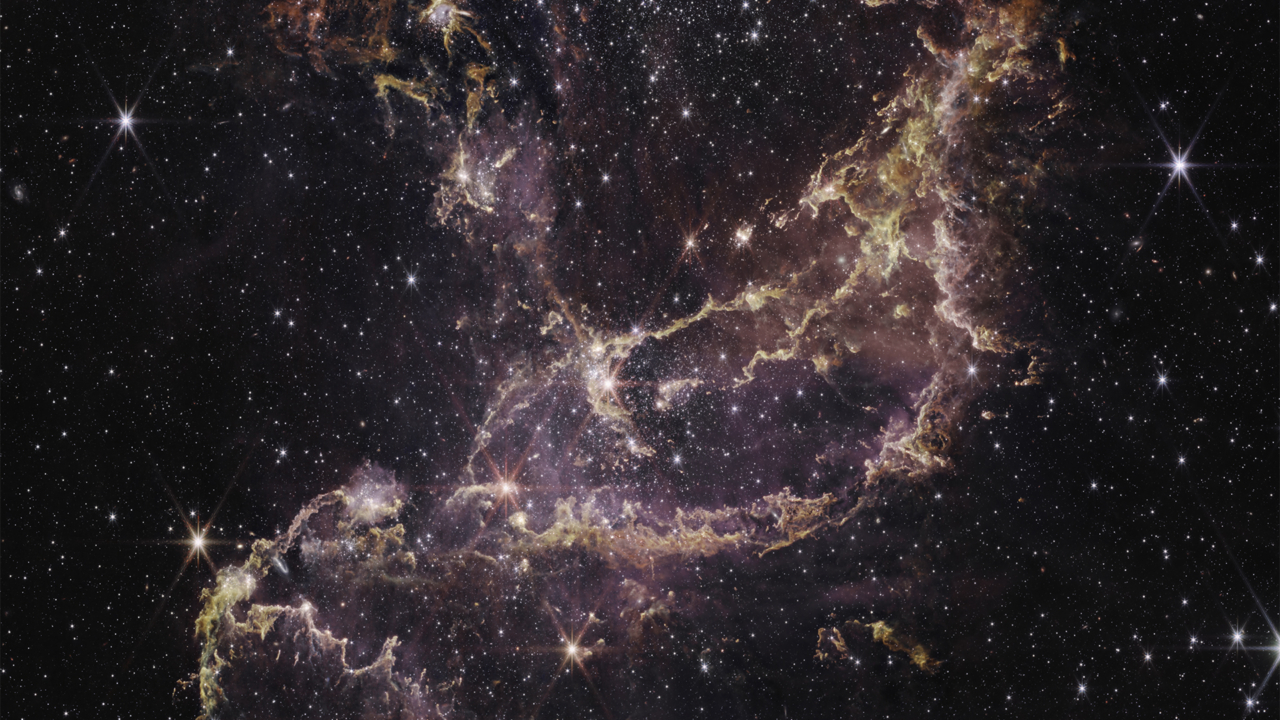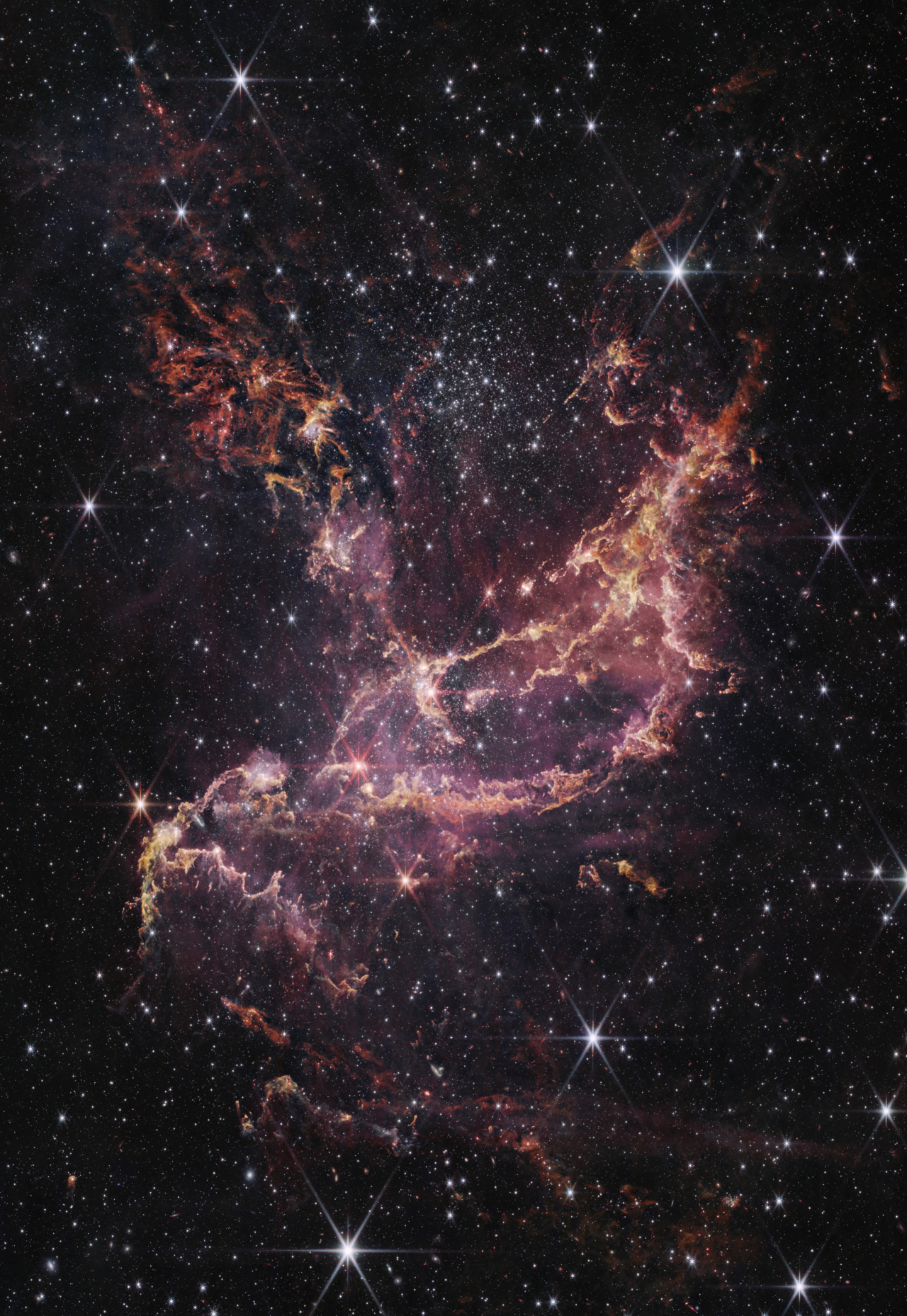

Photograph courtesy NASA, ESA, and CSA
words by willow defebaugh
“We learn the deepest things in unknown territory. Often it is when we feel most confused inwardly and are in the midst of our greatest difficulties that something new will open. We awaken most easily to the mystery of life through our weakest side.”
—Jack Kornfield
Have you ever looked at a photograph of space and wondered exactly what you are looking at? According to NASA, roughly 68% of the universe is dark energy and 27% is dark matter. The remaining 5% is all of the matter that we have observed, that makes up life on Earth. As for what dark energy and dark matter are exactly, the short answer is that we have no idea.
Dark matter and dark energy are essentially names given to phenomena that astronomers currently cannot explain. The first is that, if you spin anything at a speed fast enough for its centrifugal force to exceed the forces holding it together, its parts fly off in every direction—but at the speed galaxies rotate, there is not enough visible matter to prevent that from happening. This suggests that there is invisible matter holding everything together: dark matter.
The second is that, based on Albert Einstein’s theory of gravity, the expansion of the universe should be slowing down because matter pulls everything together. But in 1998, the Hubble Space Telescope observed faraway supernovae that revealed the opposite: the universe used to be expanding more slowly than it is today. Something is accelerating its expansion, what astronomers call dark energy.
Scientists have been attempting to solve these mysteries for decades. Some have said that Einstein’s theory of gravity needs to be reworked, while others have argued that cannot be the case, considering it accurately explains so much. A study published in 2021 in The European Physical Journal C has even proposed a particle that connects “normal” matter with dark matter by serving as a portal to a warped fifth dimension. All of these efforts in scientific explanation seeking to answer a singular, vexing question: how do you prove that which cannot be detected?
This question is one that mystics have long mulled over as well. In spiritual traditions, the seen and unseen are sometimes coded as light and dark, since the former reveals the world around us while the latter obscures it. (Science does this too. After all, dark matter and energy are not actually dark; they are just called that because they are undetectable.) In Western religions, these forces of light and shadow are often attached to morality: good and evil. It is no mystery then, why so many of us were instilled with an unshakable fear of the unknown—which is regrettable, considering it accounts for 95% of our universe.
Dark matter holds everything together. Dark energy expands our universe. And yet we demonize the darkness, which is just another word for that which we do not understand. We cling to the light, but what is already known cannot, by definition, teach us anything new. As Buddhist author Jack Kornfield says, it is the time we spend in the unknown that we learn the most. Like our universe, it is in the dark that we grow and learn how to hold ourselves together.
Many characterize our time as one spent searching for answers in the shadows, seeking truth, in which the uncertainty is ever-present, as are loss and learning. We all experience moments of darkness. But the truth is, we’ve always been in it. We always are. Try as we might to understand our unknowable universe, some mysteries cannot be solved. Perhaps someday we will find solace in the secrets swimming all around us—the space between stars.
Editor’s Note: This story was originally published in 2021. The version above was edited and adapted for The Overview book.
In the Dark